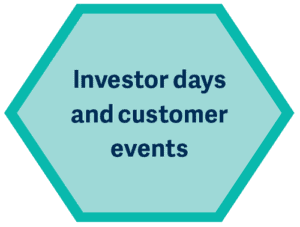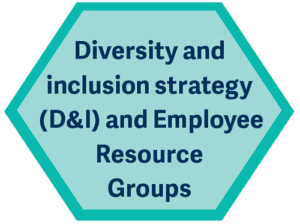Boards have the potential to play a significant role in helping their organizations shape culture. We look at specific steps boards can take to advance their oversight of culture and satisfy the expectations of investors and shareholders, based on recent Russell Reynolds Associates research, as well as conversations with leading directors and corporate governance experts.
Shareholders and regulators across the globe are demanding improvements in board oversight of corporate culture. Institutional investors seek to better understand companies’ approaches to human capital management (“HCM”), tone at the top, and the attendant reputational risks.
Corporate culture is a business issue for companies and their boards. The new generation of workers weighs workplace culture when choosing their jobs, and the protracted low rates of unemployment have added fuel to the talent war. Best-in-class companies are therefore seeking to distinguish their corporate cultures from those of their peers in ways that will attract and retain today’s top talent. Carefully focused, boards could play a significant role in this effort, even if they remain unmoved by the demands of their other stakeholders.
In June 2019, Russell Reynolds’ Board and CEO Advisory Partners hosted a panel as part of New York Governance Week on the evolving practice of board-level oversight of corporate culture. The panel included two distinguished board directors: Gabrielle Sulzberger1 and Rajiv L. Gupta.2 The discussion provided nuanced perspectives on engagement with corporate culture from experienced directors sitting on our panel and in the room, as well as investors and other corporate governance professionals in the audience. This paper summarizes the discussion at this event and proposes some approaches for boards to consider as they seek to improve their own oversight of corporate culture.
Identifying and Defining Corporate Culture at Board Level
The largest institutional investors – BlackRock, Vanguard, and State Street Global Advisors (the “Big Three”) – are asking for board oversight of both culture and HCM. The Big Three believe culture and HCM both pose financial risk to investors and drive long-term value: they therefore expect directors to be prepared to communicate their oversight practices and processes to investors, whether indirectly through securities disclosures or directly during engagements. In parallel, there is growing awareness among board directors that corporate culture directly impacts operations, the potential success of transformation programs and the integration of acquired companies and thus financial performance.
Data from the Russell Reynolds 2019 Global Board Culture and Director Behaviors Survey showed that board members who self-identified as having the most engaging, professional and productive board cultures discuss corporate culture at more than half of all board meetings, and that they are confident the company culture reflects the desire of the board.
Yet Governance Week participants heard that board members more traditionally focus on the “what” and “when” of strategy rather than the “how” of culture – a perspective also reflected in the 2017 Report of the NACD Blue Ribbon Commission on Culture as a Corporate Asset. One of the recommendations in that report, espoused by our panelists, is that directors ask management how they intend to achieve a particular goal since an understanding of the organization’s culture is imbedded in the answer.
Linking Culture and HCM with Strategy
Boards have traditionally looked at human capital management through the lens of executive compensation and CEO succession planning. Recently, there have been increases in the emphasis on rigor in CEO succession planning and in the demands for earlier planning; we have also seen a greater emphasis on succession planning for other C-suite roles. The growing focus on oversight of broader human resource issues (for example, the attraction and retention of top talent, the gender pay gap, sexual harassment) is somewhat newer, and thus boards’ notions about what they should be doing, and how, is less well defined.
Relative to other components of strategy – such as customers, financials, KPIs – culture is harder to fully define and understand, let alone measure. One participant commented that their preferred definition is a mashup from Edgar Schein3 and Jon Katzenbach4: that culture is the “sum total of how we do things around here – it is the written and unwritten ways an organization works.” Culture is a critical enabler of strategy and that is why boards must focus on ensuring it is an integral consideration in management’s approach to executing strategy. The adage that ‘culture eats strategy for breakfast’ is still accurate.
Management must be able to clearly articulate both the current culture and the desired culture and why evolving the culture is critical to success. The panelists agreed that if this articulation is lacking, the board should work with management to encourage clarity.
That said, some CEOs have not sufficiently emphasized how culture is a key part of their strategy. The pressure of quarterly earnings and lack of tenure can also undermine efforts to lead long-term culture change. Equilar data shows that the median CEO tenure at an S&P 500 company in 2017 was five years, down an entire year compared to the 2013 data. With more tenure in the boardroom than in the C-suite, non-executive directors have to insist that management develops the right corporate culture and the leaders required to support the longer-term sustainability of the company.
Organizing the Board for Ongoing Oversight of Culture
Given the relatively new emphasis on culture oversight by boards, directors will need to determine which issues are within their purview and how the board will engage on the topic. As with other issues, directors must be careful not to cross the line between oversight and management.
Although the full board should maintain oversight responsibilities for the organization’s culture, it is also important to pursue specific and deeper oversight at committee level. Corporate culture touches responsibilities covered by nominating and governance, audit, and compensation committees. However, our panelists noted that, at larger public companies, this specific committee-level oversight of culture issues was often allocated to the nominating and governance committee.
Understanding what metrics to focus on and the ways to get an independent view of company culture are critical to success. Our research found close to 30 credible metrics that a board may consider when evaluating culture and HCM. Each of these measures could be further parsed and compared, leading to a substantially greater number of specific metrics. (See appendix on page 6 for a short, high-level list of inputs on organizational culture for boards to consider.)
The board – or a specific board committee – may want to ask management to develop a dashboard of the most meaningful data and analytics linked to the company’s culture and business strategy. For board-level oversight, our panelists emphasized that independent third-party data – for example, social media and employer rating websites – and whistleblower/hotline reports were critical to spotting patterns of problems in the culture.
Understanding Culture Beyond the Metrics
Directors who want to truly understand organizational culture need to go beyond discussion in the boardroom. Site visits, spending time with customers, observations drawn from participation in investor days, and connecting with employees can all provide directors with insights to bring back to the boardroom. Broad categories of enquiry might include the following:

Panelists noted that site visits are very helpful – be that through meeting employees, convening small discussion groups with managers, and/or attending town halls. In most companies, management willingly offers such opportunities to directors. However, the chair or lead independent director of the board should work with the CEO to provide a cadence and process to this practice, while also making it a part of the onboarding of new directors.

Panelists suggested that directors may supplement site visits and consider attending investor and customer events. These experiences equip directors with a well-rounded understanding of the interactions between management, employees, investors, and customers. From an oversight perspective, this enables directors to garner first-hand insights about the alignment of internal and external messaging and behavior.

The board should have a working knowledge of the company’s D&I strategy when assessing culture and should also strive for diversity in its own ranks. A more diverse board can identify strategic blind spots and encourage a positive corporate culture by challenging management to consider D&I throughout the organization. Involvement in Employee Resource Groups can also provide useful insight into culture while enabling board directors to act as valuable role models for particular groups of employees.
Top Ten Tips for Board Oversight of Culture
We believe that boards should consider the following initiatives when seeking to elevate the quality of the necessary conversation about oversight of culture and HCM:
- Establish oversight responsibilities at the board and committee level.
- Ensure management has a clear understanding of the current culture and has articulated a vision of the desired culture that is required to deliver the longer-term strategy.
- Request management develop a culture scorecard or dashboard of key metrics to enable the board to monitor key aspects of the culture. Ensure board members have access to employee hotline and engagement survey data that has not been filtered by management and can help identify any problems in the organization.
- Ensure management has aligned all key programs in the company to reflect the desired culture, including strategy and risk management, ethics and compliance, internal audit plans, performance evaluation, succession planning and compensation. The board’s compensation committee will also need to make sure its own approach to remuneration is designed to reward desired culture and behaviors.
- Assess manifestations of the culture beyond the boardroom by reviewing external data derived from social media and through coordinated site visits. Site visits should include informal opportunities for interaction with management and employees at that location.
- Use the appropriate board committees to seek the views of board advisors who come into close contact with management and employees such as outside counsel, independent audit firm, and other consultants for their insights on the corporate culture.
- Ask management to develop modules on the company’s purpose, culture and people that can be included in new director onboarding and director education in the boardroom.
- Ensure there is a crisis management plan that deals with a culture-related crisis such as #metoo.
- Examine the board’s HR and HCM expertise and recruit accordingly. Keep an open mind about whether such skills can best be found among business leaders or whether current or former heads of human resources could be an interesting, and relatively diverse, pool to consider.
-
Identify – via rigorous self-evaluation and periodic independent evaluation – how the board’s own culture and practices either help or hinder the reinforcement of the desired corporate culture.
APPENDIX
Consider quantitative, qualitative, internal, external, demographic, and company-specific measures.
This is intended not as an exhaustive list but as a thought-starter for further development within an organization’s specific context.
Internal data concerning:
- Hotline calls (internal and external)
- Mobility throughout the company (e.g., internal hire data)
- Exit interview data
- Resources expended on training, and the mission and content of the training
- Diversity and inclusion efforts (e.g., data and efforts from Employee Resource Groups)
- Employee surveys exploring views of company mission, leadership, and resources
- Customer satisfaction surveys and focus group results
- Mystery shopping
- Literature distributed by marketing and communication departments concerning culture (internal and external)
- Internal communications channels (e.g., slack channels, intranet pages)
Comparative peer and internal data concerning: New compliance concerns
- Employee benefits
- Social media (e.g., Glassdoor, alumni Facebook pages)
- ESG advisor scores related to human and social capital metrics
- Safety (e.g., incident rates)
- Social impact or community events
- Litigation
- Controversies
Internal demographic breakdown and (where possible) comparative peer data concerning:
- Management versus rank-and-file employees
- Salaries/pay gaps
- Bonuses
- Promotion rates
- Voluntary and involuntary attrition/turnover
- Incoming/newly-hired employee data
FOOTNOTES
1 Gabrielle Sulzberger’s current and former directorships: Mastercard, Ford Foundation, Brixmor Property Group, Whole Foods (Chair), The Stage Stores, Teva Pharmaceutical, and Bright Horizons Family Solutions.
2 Rajiv L. Gupta’s current and former directorships: APTIV PLC (Chair), Avantor Inc. (Chair), Arconic (Lead Director), DuPont, HP Inc., The Vanguard Group, and Tyco International.
3 Edgar Schein is the Society of Sloan Fellows Professor of Management Emeritus and a Professor Emeritus at the MIT Sloan School of Management.
4 Jon Katzenbach is founder of the Katzenbach Center, Strategy&’s global institute on organizational culture and leadership.
The article was first published here.
Photo by Kelly Sikkema on Unsplash.

 5.0
5.0 





















